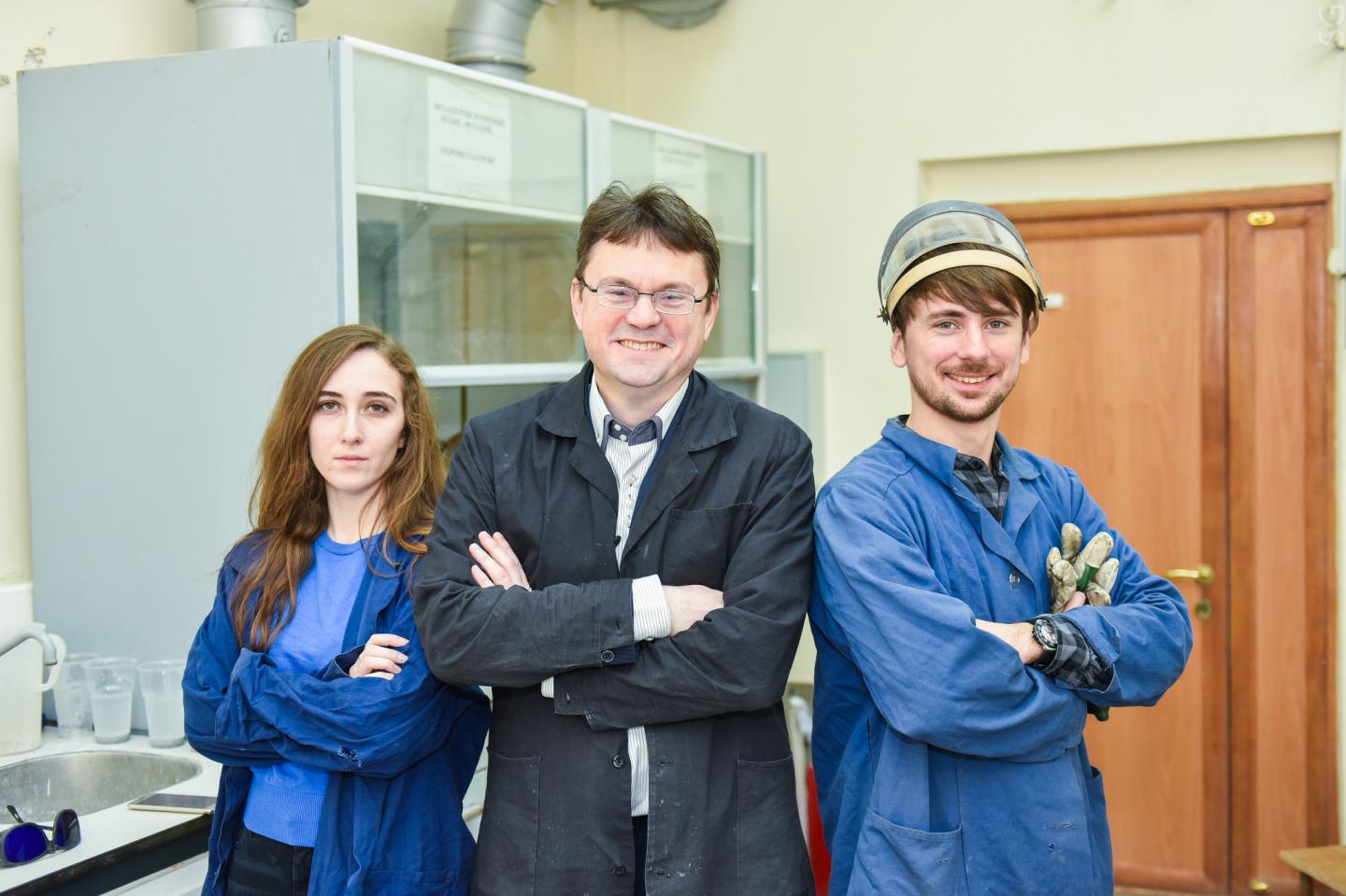
Credit: ©Sergey Gnuskov/NUST MISIS
Due to the unique catalysts based on metal nanopowders scientists of the National University of Science and Technology “MISIS” managed to increase the burning rate of solid rocket fuel by five times. The invention will make spacecraft five times faster.
Jet thrust in solid rocket engines is created by burning a mixture of high-energy substances capable of fast burning. At the same time, a large amount of heated gaseous body is released and forms a jet stream – that has been shown in the past by Konstantin Tsiolkovsky. As a rule, a polymer matrix with a filler of powerful combustible substances, oxidizing agents, metal powder, such as aluminum and various modifiers, is used as a solid fuel.
The basis of combustible substances in the modern solid rocket fuels composition is cyclic nitramines. They are chemically resistant to traditional combustion catalysts, such as metal oxides and lead salicylates. This property does not allow scientists to increase the fuel burning rate, on which a rocket’s flight speed directly depends.
Metal scientists from NUST MISIS have found that metal nanopowders can act as an effective catalyst for the burning of solid fuels reaction, which means it results in increasing the speed of an aircraft. During the laboratory tests conducted by the research team, nanoscale metal powders showed good catalytic activity.
In the course of the research, materials scientists added metal nanoparticles to the fuel, which accelerated the ignition of aluminum particles in the fuel composition. The use of nanopowders of aluminum, boron, nickel, and molybdenum made it possible to increase the burning rate by 1.5 times, regardless of pressure. Catalysts based on copper nanopowder showed the most impressive results – the fuel burning rate increased by almost 5 times. However, researchers believe that the obtained reagent needs to be improved.
“The copper nanopowder already reacts with the components of the fuel during its production at low temperatures, which reduces the efficiency of using such a catalyst,” said Alexander Gromov, project manager, chief researcher at the NUST MISIS Rapid Prototyping Center. Scientists are currently completing a series of laboratory tests of the obtained catalysts. The results of the materials scientists’ research are published in the Propellants, Explosives, Pyrotechnics journal.
###
Media Contact
Lyudmila Dozhdikova
[email protected]
Original Source
http://en.




